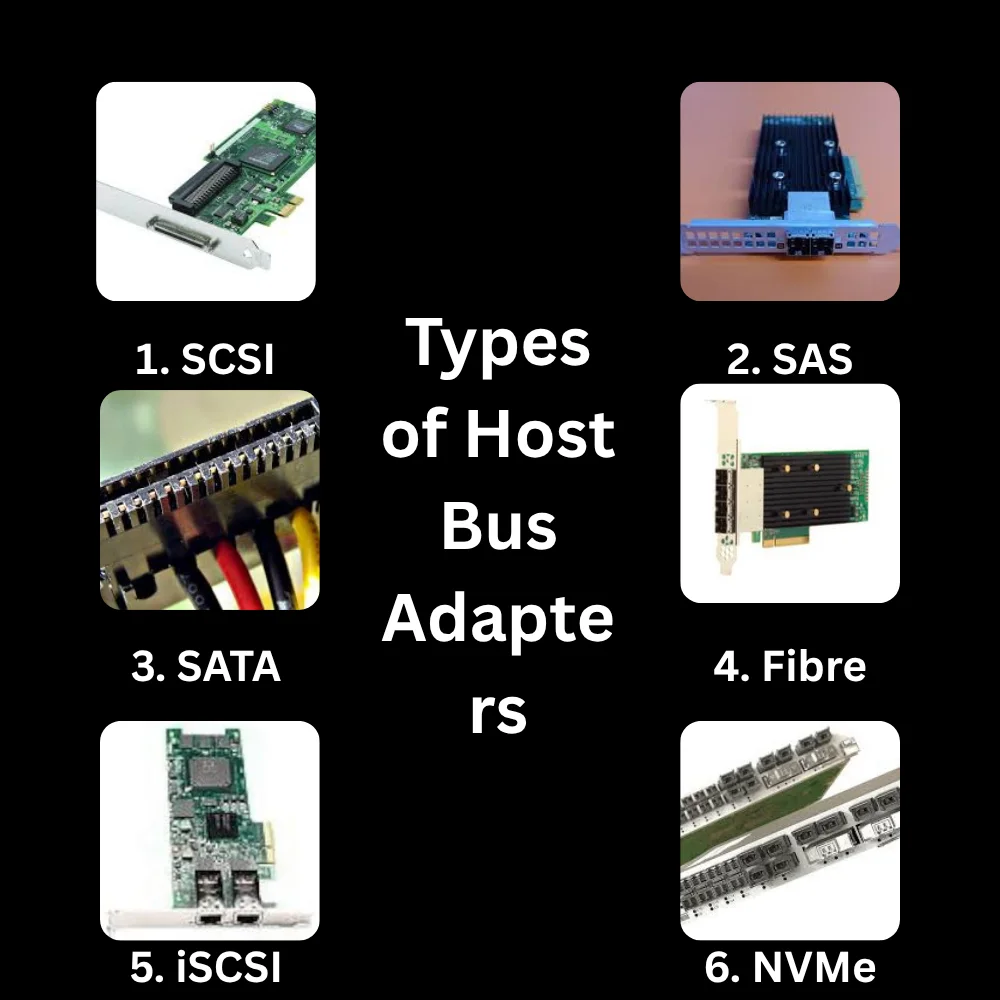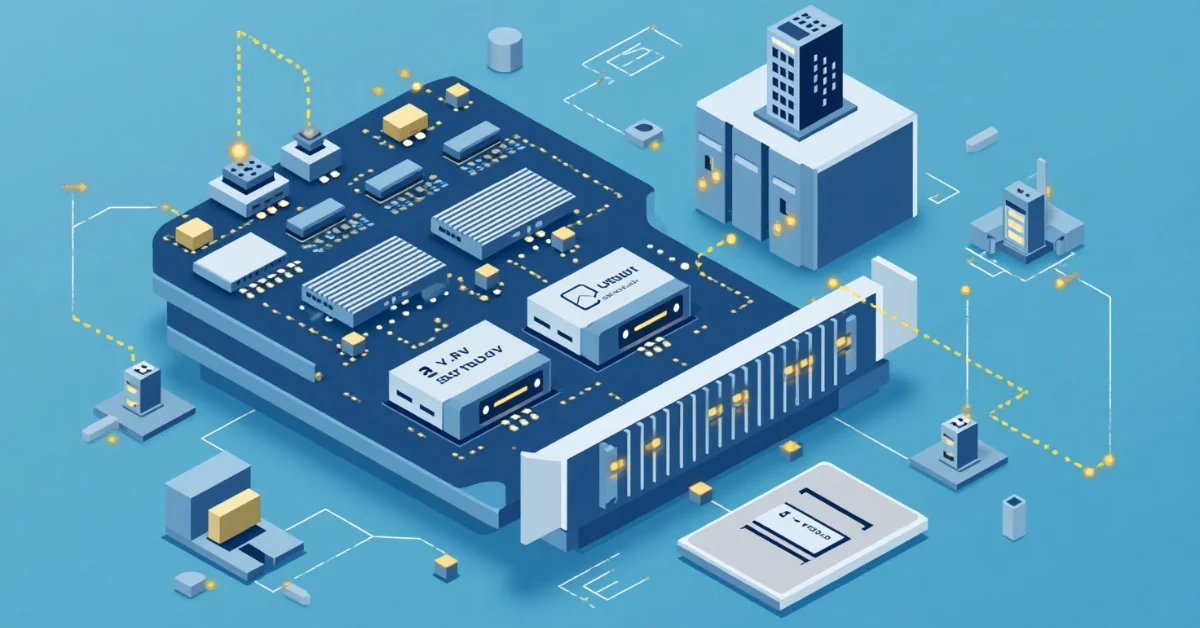Where data is the backbone of almost every operation, the efficiency of data transfer between computers and storage devices is paramount. One of the unsung heroes facilitating this seamless communication is the Host Bus Adapter, commonly known as HBA.
What is a Host Bus Adapter?
A Host Bus Adapter (HBA) is a hardware component that acts as a bridge between a computer’s internal system and external storage devices. Think of it as a translator that ensures your computer and storage devices, like hard drives or storage area networks (SANs), understand each other and communicate effectively.
HBAs are essential for:
- Data Transmission: They manage the flow of data between the computer and storage devices.
- Protocol Conversion: They convert data into formats that storage devices can understand.
- Storage Device Management: They oversee multiple storage devices, ensuring efficient data management and redundancy.
Key Features
When choosing an HBA, consider these features:
- Interface Type: Does it support Fibre Channel, SAS, or another protocol?
- Speed: Check the data transfer rate to match your needs.
- Compatibility: Ensure it works with your server and storage.
- Ports: More ports mean connecting multiple devices.
- Offloading Capability: Some HBAs handle tasks independently to reduce CPU load.
- Driver Support: Good software drivers are essential for smooth operation.
How HBAs Work?
A Simple ExplanationThink of an HBA as a skilled postman. When your computer wants to send data to a storage device, the HBA takes the data, packages it properly, and ensures it’s delivered safely and quickly. It also receives incoming data and makes sure it reaches the right place inside the computer. This process involves handling complex communication rules (protocols) that allow different devices to work together seamlessly.
Types of Host Bus Adapters

HBAs come in various forms, each tailored for specific applications and environments:
1. SCSI (Small Computer System Interface) HBAs
These were among the first types of HBAs, connecting servers to SCSI storage devices. While they played a significant role in earlier computing environments, they’ve largely been replaced by faster technologies like SAS.
2. SAS (Serial Attached SCSI) HBAs
SAS HBAs are designed for high-speed data transfer between servers and storage devices. They offer better performance and scalability compared to their SCSI predecessors.
3. SATA (Serial ATA) HBAs
SATA HBAs connect servers to SATA storage devices. They’re commonly used in environments where cost-effectiveness is a priority over speed.
4. Fibre Channel HBAs
These HBAs are used in enterprise environments requiring high-speed, low-latency data transfers. They connect servers to storage devices over Fibre Channel networks, ensuring rapid and reliable data access.
5. iSCSI (Internet Small Computer Systems Interface) HBAs
iSCSI HBAs allow data transfers over IP networks, making them suitable for environments that prioritize cost efficiency and flexibility.
6. NVMe (Non-Volatile Memory Express) HBAs
With the rise of NVMe technology, these HBAs support extremely fast solid-state drives (SSDs), providing massive speed boosts for demanding applications.
Common Uses of HBAs
HBAs are used in various environments:
- Enterprise Servers: To manage large storage arrays.
- Virtualization: Connecting virtual machines to storage.
- Backup Systems: Ensuring fast access to backup drives.
- High-Performance Computing (HPC): Enabling rapid data access for complex calculations.
- Storage Area Networks (SANs): Linking servers to shared storage over high-speed networks.
Functions of Host Bus Adapters
HBAs are more than just connectors; they perform several critical functions:
- Data Transfer: They facilitate rapid data movement between servers and storage devices.
- Error Checking and Correction: HBAs ensure data integrity by identifying and correcting transmission errors.
- Protocol Conversion: They translate data into compatible formats for storage devices.
- Queue Management: HBAs manage multiple data transmission requests, optimizing traffic flow and reducing latency.
Importance of HBAs in Modern Computing
In today’s computing environments, HBAs play a pivotal role:
- Data Centers: HBAs support the backbone of enterprise data storage, enabling rapid data access and processing.
- Cloud Computing: They facilitate fast access to distributed storage systems in cloud infrastructures.
- High-Performance Applications: Workloads like artificial intelligence (AI), big data analytics, and video rendering benefit from the high-speed data access that HBAs enable.(
Choosing the Right HBA
Selecting the appropriate HBA depends on several factors:
- Compatibility: Ensure the HBA is compatible with your server and storage setup.
- Performance Requirements: Determine the speed and latency needs of your applications.
- Budget: Consider cost-effective options without compromising on essential features.
- Scalability: Choose HBAs that allow for future expansion of storage capabilities.
Conclusion
Host Bus Adapters are integral components in the realm of data storage and retrieval. They ensure efficient, reliable, and rapid communication between servers and storage devices. As data continues to grow exponentially, the role of HBAs in facilitating seamless data transfer becomes even more critical. Whether you’re setting up a small server or managing a vast data center, understanding and choosing the right HBA can significantly impact your system’s performance and reliability.



